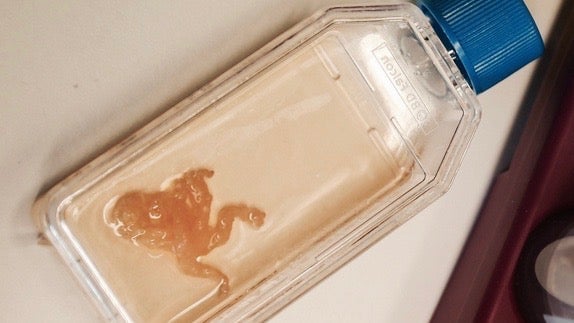Venture capitalists are betting big on one area of regenerative medicine
Until the myth of the fountain of youth proves true, regenerative medicine is the best hope we’ve got for fixing failed body parts and, as a result, living longer. Scientists won’t be able to bottle forever. They are, however, working on engineering human cells, tissues, and organs that can repair themselves.


Until the myth of the fountain of youth proves true, regenerative medicine is the best hope we’ve got for fixing failed body parts and, as a result, living longer. Scientists won’t be able to bottle forever. They are, however, working on engineering human cells, tissues, and organs that can repair themselves.
Basically, they’re trying to heal body parts using cells or tissue grown from stem cells, and by prompting regeneration with biologically active drugs that would essentially restart parts by forcing new growth, among other approaches. But it’s still a speculative venture, say Goldman Sachs analysts in an April 4 report on venture capital going into this “novel frontier.”
Perfecting processes for regenerating body parts is no mean feat, technically speaking. Plus, there are ethical questions to resolve and regulatory hurdles to overcome. In other words, it’ll take a while before new parts are available.
Nonetheless, investors are interested in the field, and especially in companies working with stem cells. Goldman analysts believe regenerative medicine is attractive because of ”its vast potential” to eventually cure common and rare diseases in almost any tissue or organ, including the heart, liver, and lungs.
So, money’s going to regenerative medicine, at a rate of hundreds of millions of dollars annually. In 2010, the field attracted about $200 million in venture capital and in 2016, that figure had quadrupled. Stem cell technology attracts the vast majority of investment; $700 million of the $800 million dedicated to regenerative medicine in 2016 went to stem cell projects.
But analysts noted that the number of deals hasn’t increased accordingly. Between 2010 and 2016 deals remained in a range of 30 to 40 while investment rose pretty steadily. This suggests that a few companies attracted larger investments per deal over time from venture capital firms.
Companies partnered with science giants—like BlueRock Therapeutics, which works with stem cell pioneer and Nobel laureate Shinya Yamanaka of Kyoto University—get the largest investments and valuations, according to Goldman Sachs.
Analysts also remarked on Unity Biotechnology, which is developing a technique to eliminate senescent cells—or expiring cells—to increase longevity and maintain youthfulness, and has been shown to work in mice. Senescence is like a biological “emergency brake” cells use to stop dividing and multiplying out of control. But after the brake’s been pulled, the senescent cells remain and accumulate, secreting inflammatory molecules that harm neighboring cells and tissues. Selectively removing them could keep people younger, healthier longer, according to the company.
Scientists seek funding from public sources too, of course. At the University of Washington’s Institute for Stem Cell and Regenerative Medicine, for example, researchers are manipulating stem cells to heal and restore the function in hearts, eyes, kidneys and other tissues, according to Charles Murray, the institute’s interim director. In an April 9 editorial in the Seattle Times, he writes, “This year, we also seek a first-time investment from our state legislature.”